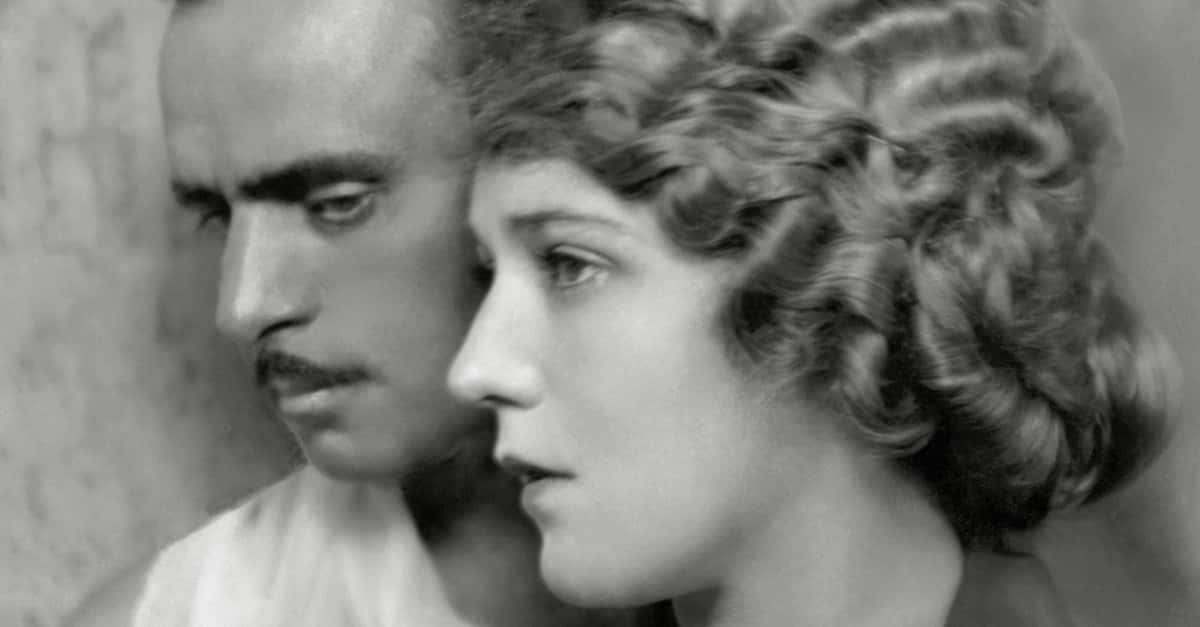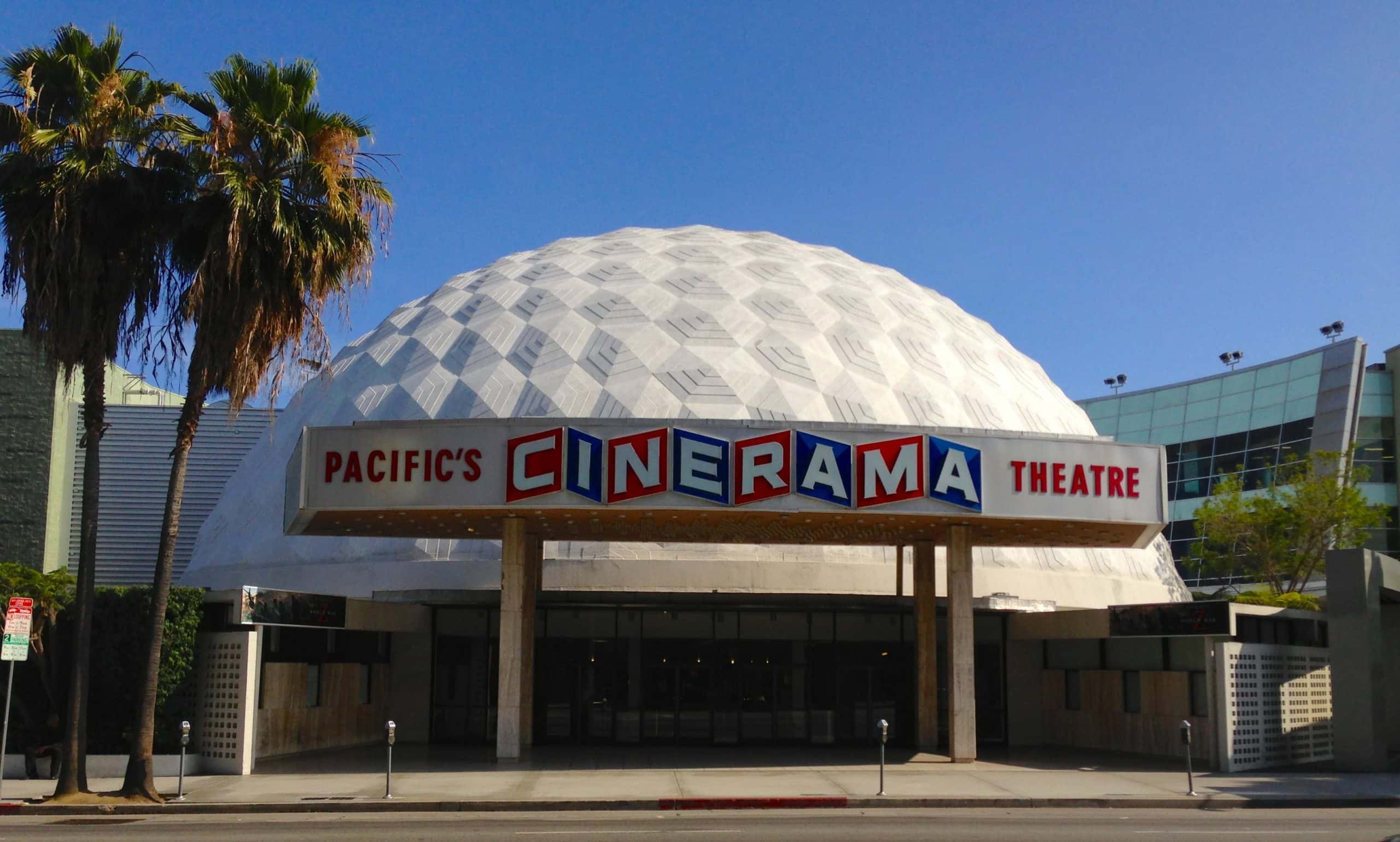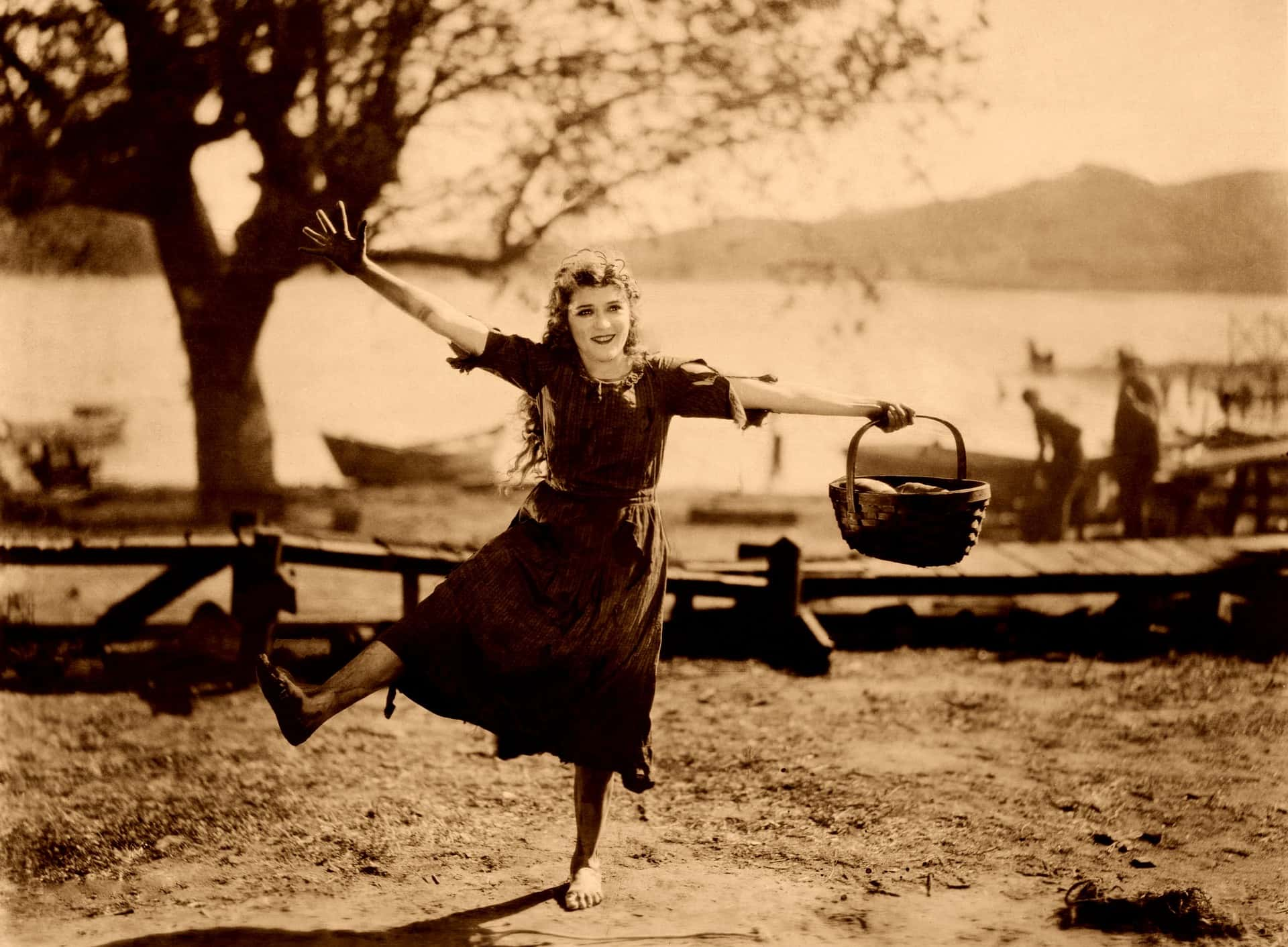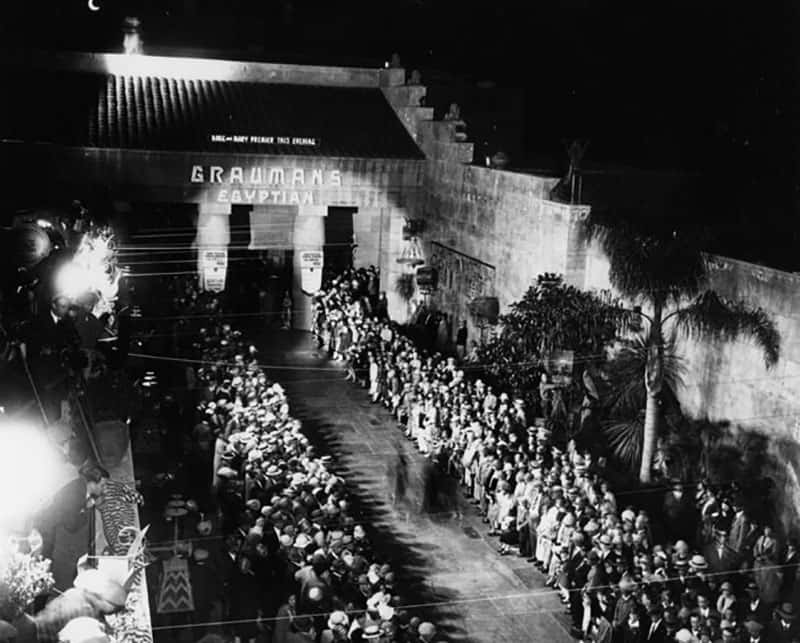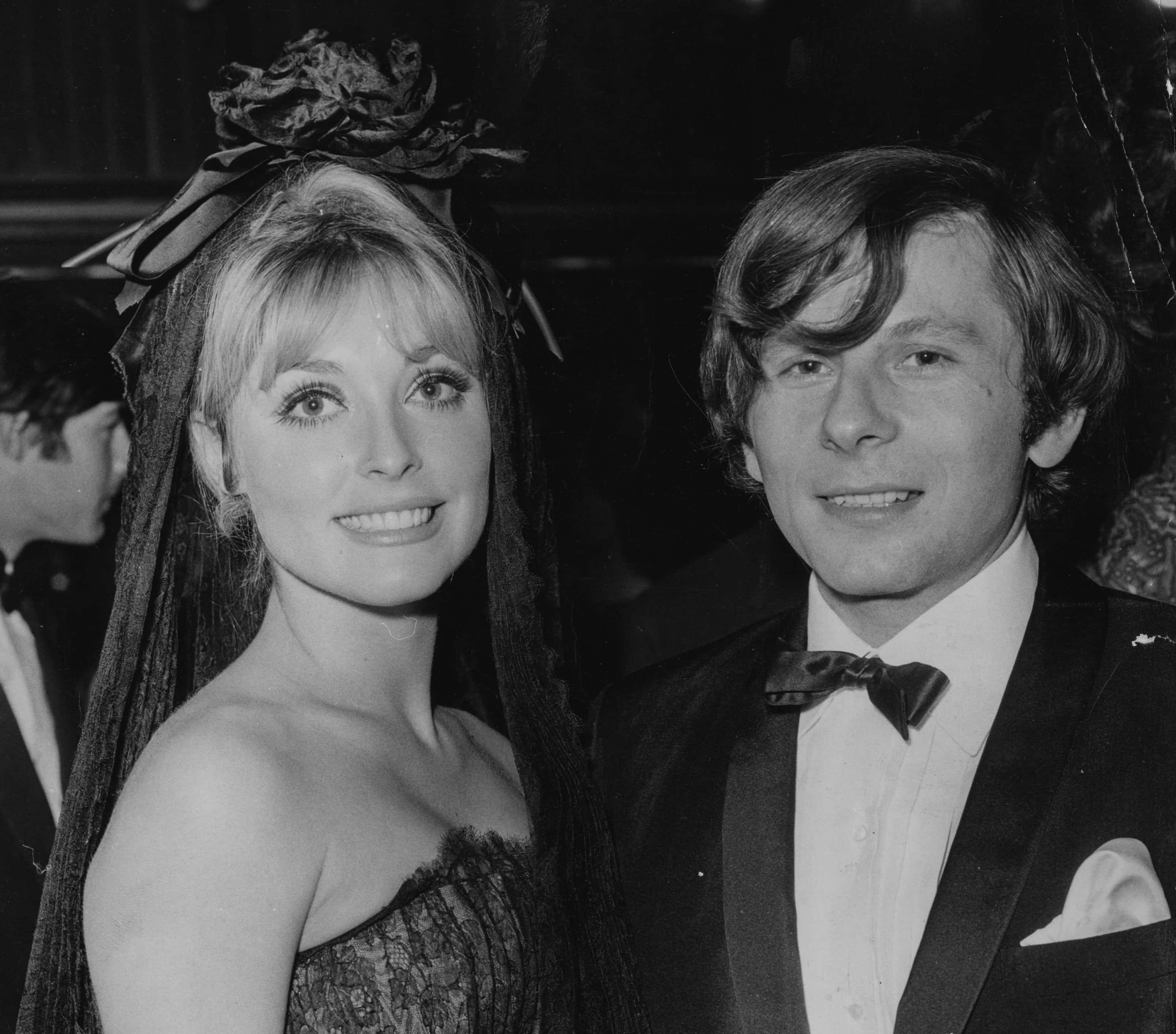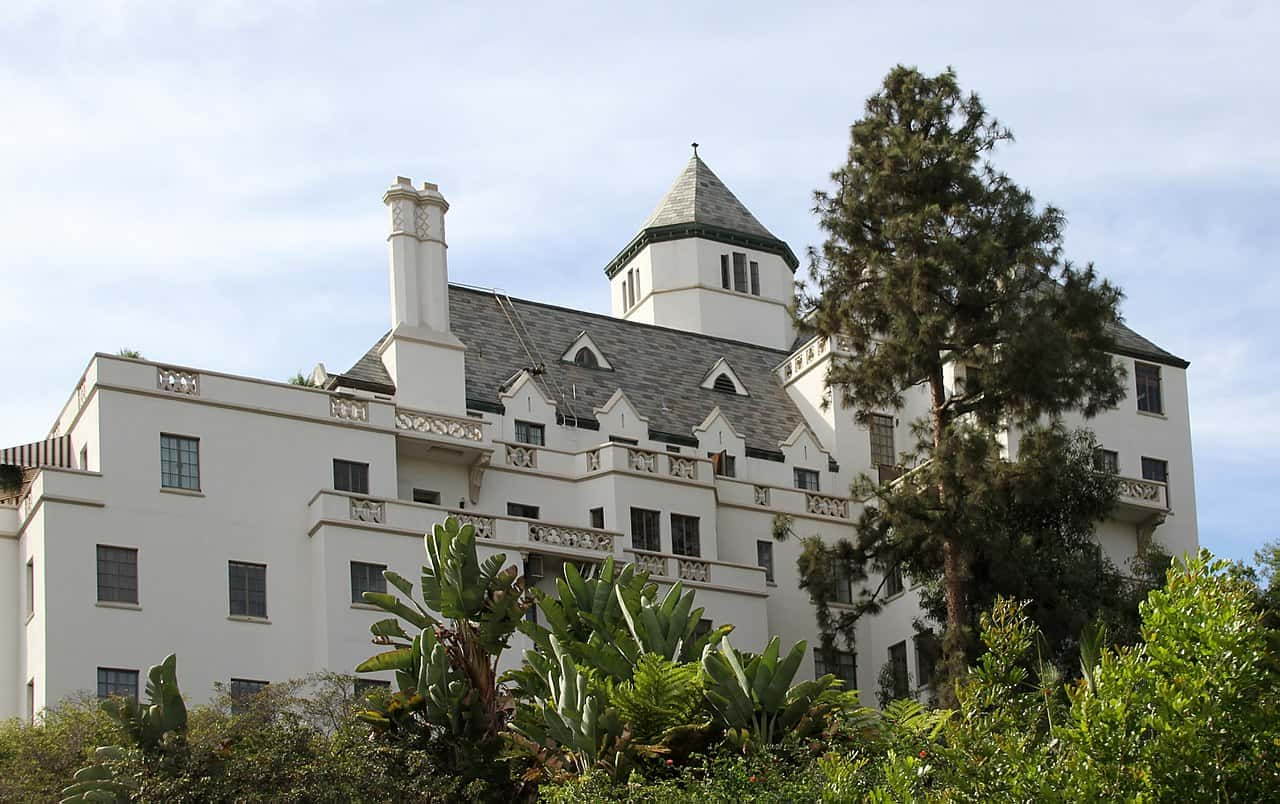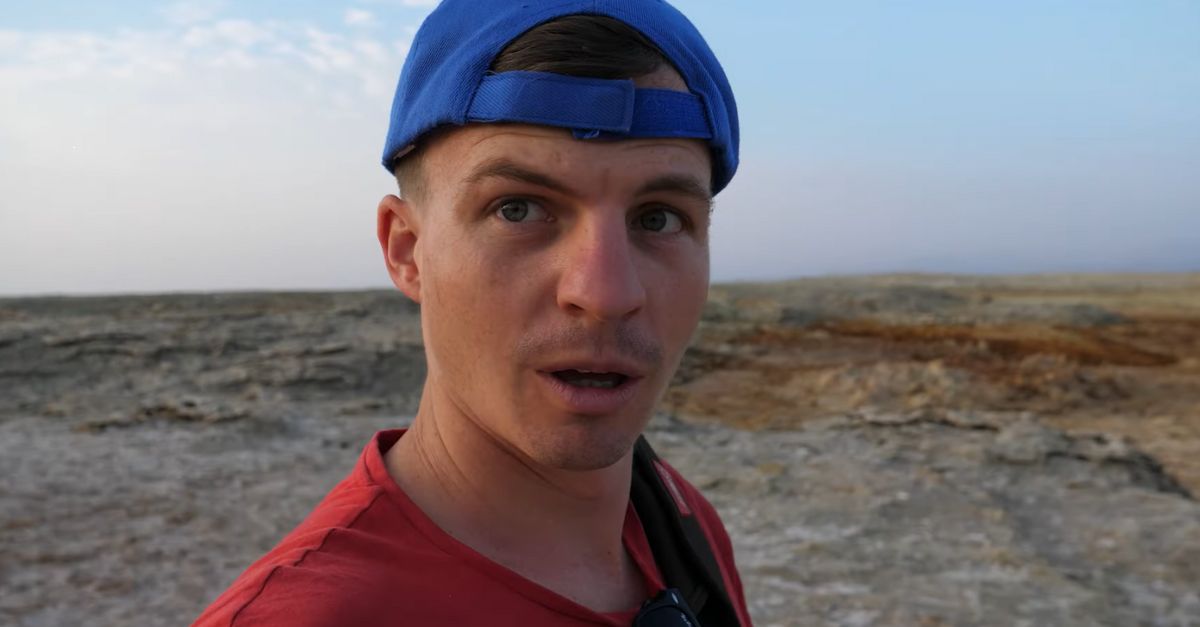Hollywood has long carried legends of glitz and glamour. Celebrities work and play in studios, restaurants, mansions, and hotels that have decades of history. Some iconic Hollywood locations were the setting of star-studded Golden Age fairy tales, while others have a dark and haunted past. After a century as the hub of American cinema, the most beloved sights of Hollywood have some wild stories to tell.
1. Hollywood Was Founded To Escape A Film Monopoly
Hollywood might never have hosted the film industry if not for the Motion Picture Patent Company. The organization, founded by Thomas Edison himself, held a near-monopoly on film production. Filmmakers had to take drastic action to get out from under Edison’s thumb.

2. The Move To Hollywood Undercut Thomas Edison
Thomas Edison held so many patents related to filmmaking technology that he could demand a cut of everything. Aside from the year-round pleasant weather and perfect movie scenery, California had one distinct advantage: Thomas Edison wasn’t there. It was much harder for Edison to enforce his patents all the way across the country, and California judges were less likely to side in his favor. Soon, Hollywood began to bustle.
3. The Hollywood Hotel Began A Glamorous History
In 1902, when Hollywood Boulevard was still a dirt road, H.J. Whitley opened a luxurious country resort called the Hollywood Hotel at the center of this sleepy suburb of Los Angeles. The Hollywood Hotel put Hollywood on the map for the first time. The Los Angeles Pacific Railroad even included it on its trolley car tourist route, bringing the rich and famous to play in Hollywood in droves.
4. Hollywood Hotel Hosted Early Film Stars
As the growing film industry spawned studios in Hollywood, the Hollywood Hotel became home to the cast and crew who worked nearby. Filmmakers purportedly “discovered” silent film heartthrob Rudolph Valentino while he was teaching a screenwriter to tango at a hotel dance. The hotel would see many of Valentino’s dizzying highs and crushing lows.
5. The Hotel Ballroom May Have Inspired The Walk of Fame
Hollywood Hotel attracted so many famous regulars that the proprietor added painted stars on the ceiling over the regulars’ tables. Decades later, as the Hollywood Hotel was waning, the Hollywood Chamber of Commerce may have drawn upon the iconic ceiling as inspiration for the Walk of Fame stars that still immortalize celebrities today.
6. The Academy Awards Continue The Hotel’s Legacy
In 1957, developers tore down the Hollywood Hotel, which had survived long past its heyday. However, the star-studded legacy of the hotel continues. The Dolby Theater, home of the Academy Awards ceremony, now stands on the same site.
7. The Hollywood Sign Advertised Segregated Real Estate
The Hollywood sign is now a landmark welcoming tourists into town, but its original purpose was to advertise the segregated housing development Hollywoodland. Los Angeles Times publisher Harry Chandler had invested in the development, and he and his partners decided the best way to advertise was a 45-foot-tall flashing sign. The original sign was lit by 4,000 light bulbs, which flashed across the word in segments: HOLLY. WOOD. LAND.
It would be hard to overshadow that landmark, but Howard Hughes soon tried.
 Flickr, Breve Storia del Cinema
Flickr, Breve Storia del Cinema
8. Howard Hughes Almost Built A Mansion Next To It
In 1940, business magnate Howard Hughes purchased the land around the Hollywood sign for a grand romantic gesture. He intended to build a mansion on the site for his girlfriend Ginger Rogers and himself. When Ginger Rogers left him before he could build his mansion, he abandoned the plan. It remained part of his estate until 2002, when investors almost followed through on his plan.
9. Hugh Hefner Saved The Hollywood Sign Twice
By the 1970s, the Hollywood sign had fallen into disrepair. That’s when the founder of Play boy Magazine, Hugh Hefner, stepped in. He hosted a gala that raised enough money to build a replacement sign, which still stands today. Decades later, investors wanted to build luxury homes on Howard Hughes’ former land. To prevent the development, donors raised the $12.5 million asking price to convert it into protected parkland. Hugh Hefner chipped in the final $900,000. But that didn’t always keep the sign from changing.
10. Students Kept Changing The Sign As Protest Art
Danny Finegood started a long-lived protest art project at the Hollywood sign when he was a student at Cal State Northridge in 1976. Fineman and his friends used black and white fabric to change HOLLYWOOD into HOLLYWEED, celebrating a new state law decriminalizing cannabis possession. Over the years, he continued the project. Fineman altered the sign to OLLYWOOD to protest Oliver North’s Iran-Contra testimony and OIL Battle to protest the Gulf Battle.
11. Houdini’s Widow Conducted A Séance At The Knickerbocker
The Knickerbocker Hotel was a bustling hub of entertainment during Hollywood’s Golden Age. However, in 1936, it may have had one unusual celebrity guest: The ghost of Harry Houdini. Before his passing, Houdini told his widow Bess that he would return to her from the afterlife to prove that it existed. On Halloween night, the tenth anniversary of Houdini’s passing, Bess Houdini came to the Knickerbocker to conduct a rooftop séance.
The séance caught the attention of the media, but that wasn’t the only headline coming from this hotel.
12. The Knickerbocker Hid Away Secret Relationships
As the Knickerbocker’s popularity faded, it remained a common rendezvous for celebrities wanting more privacy. Marilyn Monroe and Joe DiMaggio met at the Knickerbocker’s bar for dates away from prying eyes.
13. Unfortunate Demises Haunt The Knickerbocker
During its last decade as a prominent Hollywood hotel, tragic demises plagued the Knickerbocker. Costume designer Irene Gibbons jumped from the window of her room. Director D.W. Griffith had a fatal stroke in his room, and I Love Lucy star William Frawley suffered a fatal heart attack while living at the Knickerbocker. The hotel still stands as senior citizen housing, many of whom insist the hotel's famous ghosts still haunt the premises.
14. Fire And Earthquakes Destroyed The Brown Derby
The Brown Derby restaurant was one of the quintessential hot spots in Hollywood history, known for its celebrity clientele and their famous caricatures adorning the walls. Clark Gable even proposed to Carole Lombard in the restaurant. However, not even its storied history could save it from disaster. After the Brown Derby closed and the property changed hands, a fire destroyed the kitchen.
The owners abandoned the property, and then it was further damaged by an earthquake in 1994. The city declared the Brown Derby unsafe, and it became the first building in Hollywood to be demolished by order of the city.
15. Charlie Chaplin Built His Own Studio For Creative Freedom
Charlie Chaplin quickly became a household name in silent films when he started his career in 1913. By 1917, he started constructing his own studio in Hollywood, where he would have complete creative control over his landmark movies. When Chaplin built his studio, the corner of La Brea and Sunset Boulevard was still a residential neighborhood.
The city soon changed around it, but the changing times came for Chaplin and his studio in worse ways.
16. Chaplin Abandoned His Studio Amid McCarthyism
After decades of success, Chaplin had to leave his studio behind in 1952. The rising tide of McCarthyism forced Chaplin to flee the United States in 1952 after he was accused of being a communist. The government revoked his re-entry permit pending an interview about his political views. Unable to return to the country, Chaplin sold his studio in 1953.
17. Chaplin Studios Lives On With The Muppets
The studio changed hands several times, hosting shows like The Adventures of Superman and Perry Mason before The Jim Henson Company bought it. In 2000, Chaplin’s old studio became the home of the Muppets, and the studio now features a statue of Kermit the Frog dressed as Chaplin’s character The Tramp.
18. Chaplin Refused To Visit His Studio After His Exile
Chaplin returned to the United States once in 1972, when the Academy invited him to receive an honorary Oscar for his life’s work. Although he received an invite to visit his old studio, he refused, saying it would be too painful. He did, however, drive past it one last time.
19. The Cinerama Dome Was A Failed Theater Experiment
When the Cinerama Dome opened in 1963, promoters called this golf-ball-shaped movie theater with a giant curved screen and a circular auditorium the evolution of cinema. It kicked off its brief time in the spotlight with the premiere of It’s A Mad, Mad, Mad, Mad World. However, theaters instead went the way of the multiplex, leaving geodesic dome movies in the dust.
The Cinerama Dome survived, however, and still shows movies today.
20. Landlords Wouldn’t Rent To Early Actors
In the silent film era, Hollywood was growing into a bustling city, but actors still struggled to find anywhere to live. Landlords considered actors a financial risk and would not accept them. Studio heads had to do something to keep their talent coming to work at the nearby studios—so two of them came up with a plan.
21. Studio Heads Built Special Apartments For Actors
Jesse Lasky, co-founder of Paramount, and Samuel Goldwyn, co-founder of MGM, went into the real estate business together to design Hollywood’s first artist’s apartments: The Hillview. The apartments catered specifically to actors. During its height, it was home to silent film legends like Laurel and Hardy, Clara Bow, and Viola Dana. It even had a rehearsal space in the basement—until Rudolph Valentino found a more, ahem, creative use for the space.
22. The Hillview Hosted Valentino’s Speakeasy
During Prohibition in the 1920s, Rudolph Valentino turned the Hillview’s rehearsal space into his own speakeasy. This hideaway for Valentino’s under-the-table drinks was accessible through a trap door from the sidewalk. Valentino’s antics, though definitely not lawful, proved to be the least of Hollywood’s worries.
23. The Studio Club Was Built To Protect Actresses
In 1916, silent film legend Mary Pickford tried to warn actresses away from coming to Hollywood. She knew they were walking into the clutches of studio executives who preyed upon young women. When that warning failed, Pickford wanted to give actresses a safe place to live together. She joined forces with Constance DeMille, the wife of Cecil B. DeMille, a filmmaker now known for his own predatory behavior.
Together, they raised money to start a chaperoned dormitory for actresses called the Hollywood Studio Club.
24. The Hays Code Founder Advocated For The Studio Club
After multiple scandals in Hollywood during the 1920s, actresses working in Tinseltown started to get a negative reputation in the press. To redeem Hollywood’s reputation, studio executives turned to Will Hays, the man behind the notoriously strict Hays Code that censored Hollywood movies until the 1960s. Hays saw the Hollywood Studio Club as a public relations opportunity, and he advocated for the club as an example of Hollywood protecting young women.
However, it couldn't keep all of its actresses away from scandal.
25. Marilyn Monroe Took A Scandalous Job To Make Rent
Marilyn Monroe lived at the Studio Club during the start of her career. The club’s rent was $50, not always an easy sum to raise for an actress who wasn’t working. Desperate to make enough money to pay the Studio Club, Monroe posed unclothed in a now-famous photoshoot, earning her rent with just two photos. But Monroe wasn’t the only notable resident with money troubles.
26. Ayn Rand Was In Debt To The Studio Club
Before Ayn Rand found fame as a writer and philosopher, she worked as a struggling extra and lived at the Hollywood Studio Club. Rand got into debt with the club, though the charity of a donor saved her. A woman donated $50 for the neediest woman at the club, and the club’s director chose Rand to receive it. Rand reportedly spent it on lingerie instead of rent.
27. The Footprints At Grauman’s Theater Were An Accident
Grauman's Chinese Theater is now known for the handprints and footprints of stars covering the forecourt, but the tradition started through an accident. In one version of the story, actress Norma Talmadge stepped into wet concrete while visiting the theater, which gave Sid Grauman the idea. But, ever the self-promoter, in the version Grauman told, he was the one who stepped into wet concrete.
Either way, the tradition continues today, and it’s not the only Hollywood tradition Grauman’s theaters started.
28. Grauman’s Egyptian Theater Held The First Hollywood Premiere
Hollywood wouldn’t be the same without glamorous red-carpet premieres, a practice that began at another of Sid Grauman’s movie palaces, the Egyptian Theater. In 1922, Grauman’s Egyptian Theater hosted the first-ever Hollywood movie premiere: Robin Hood starring Douglas Fairbanks. The movie was not shown anywhere else in Los Angeles for the rest of the year.
29. The Garden Of Allah Hosted Hollywood’s LGBTQ Community
The Garden of Allah hotel was once home to many of Hollywood’s Golden Age luminaries, but before that, it was the mansion of Russian actress Madame Alla Nazimova. Nazimova made her home a hub for lesbian and biased actresses to meet in private around her pool. She even allegedly coined the term “sewing circles” for such meetings.
30. The Clandestine Meetings Continued With Celebrity Guests
Nazimova sold her mansion in the 1920s, and the new owners converted it into the celebrated hotel. She continued living at the Garden of Allah and hosting her “sewing circles” with notable guests like Marlene Dietrich and Greta Garbo.
31. No Sight Was Strange At The Garden of Allah
The hotel was known for scandalous stories and unusual encounters among the celebrities who lived there, but strange soon became the norm for residents. When Charles Laughton lived there, he would return from filming The Hunchback of Notre Dame, only to float in the pool in full costume as Quasimodo. He had to float on his back, of course, to avoid ruining the complicated makeup he wore for the part.
It’s little wonder the hotel accepted the wild and strange, since it was on the Sunset Strip—one of the most infamous streets in America.
32. The Sunset Strip Was Outside Law Enforcement Jurisdiction
The Sunset Strip, a stretch of Hollywood’s Sunset Boulevard, has long had a wild reputation—for good reason. It was historically difficult to regulate the Sunset Strip because it was outside the jurisdiction of the LAPD, and the area had no law enforcement of its own. As a result, the underworld moved in and thrived.
33. Sunset Strip Attracted Speakeasies And Mob Bosses
In the 1920s, during the boom of Hollywood, casinos and nightclubs flourished along the Sunset Strip, often serving speakeasy drinks in back rooms. The jurisdiction loophole also made gambling technically lawful on the Sunset Strip, which attracted the attention of mob bosses such as Bugsy Siegel and Mickey Cohen, and they caused plenty of trouble for the local business owners.
34. Mob Bosses Bankrolled Sunset Strip Businesses
After Prohibition ended, underworld figures like Mickey Cohen stuck around the Sunset Strip. Many businesses on the Strip were partially owned or bankrolled by mob kingpins. The sheriff’s department, the only law enforcement authorized to regulate the area, reportedly looked the other way for nightclub and casino owners, allowing them to continue both legitimate and illegitimate business.
35. Sunset Strip Business Owners Paid Protection Money To The Mob
Certain mob bosses flourished on the Sunset Strip by running a protection racket. Mickey Cohen ran his racket out of a local clothing shop, Michael’s Exclusive Haberdashery. William Wilkerson, owner of both the Trocadero and Ciro’s restaurants, fell under his influence. He and his successors paid off Cohen in a neat scheme to avoid suspicion.
The clothing shop would send over empty boxes, and a restaurant employee would pay for the empty boxes with massive amounts of cash.
36. The Owner Of The Trocadero Ran High-Stakes Gambling
William Wilkerson had a penchant for gambling, leading him to host an ongoing high-stakes poker game in the secret backroom of The Trocadero. His fellow players were early film moguls Samuel Goldwyn, Irving Thalberg, and Darryl Zanuck. But Wilkerson also courted more dangerous friends.
37. The Trocadero Was Destroyed In A Suspicious Fire
Wilkerson tired of running the Trocadero, but he was still paying protection money to the local mob kingpins. He sought advice from bandit and gambler Nola Hahn, who allegedly suggested a fire. The Trocadero was soon gutted by an "accidental" kitchen fire, and Wilkerson sold it.
38. Wilkerson Sold Ciro’s After Another Fire
After the Trocadero, Wilkerson opened Ciro’s, which became a beloved celebrity hangout. However, Wilkerson had grander ambitions of opening a casino in Las Vegas. When he was ready to move on, Ciro’s was also damaged in a suspicious fire, allowing him to sell out of the restaurant. Wilkerson eventually opened the Flamingo casino in Las Vegas with another dangerous business partner: Bugsy Siegel.
39. A Shady Character Owned Hollywood Forever Cemetery
The Sunset Strip wasn’t the only place where Hollywood’s unsavory characters thrived. Hollywood Forever Cemetery, Hollywood’s only cemetery, was once owned by white-collar ex-con Jules Roth. Roth didn’t actually take care of the cemetery, letting it to be torn up by disrepair and vandalization. However, he did care about maintaining one thing: the cemetery’s segregation.
40. The Cemetery Refused Hattie McDaniel’s Burial
Hattie McDaniel, the first Black actress to receive an Oscar, passed in 1952, expressing her desire to be buried in the Hollywood Forever Cemetery. Roth refused McDaniel’s wishes, enforcing the segregation policy common in cemeteries, and McDaniel’s family buried her elsewhere. The current owners built a monument for McDaniel in 1999, attempting to partially honor her wishes 47 years later.
41. The Sunset Strip Became An LGBTQ Haven
The lawful loopholes on the Sunset Strip did have one upside: A thriving LGBTQ+ community. It was much safer for openly gay business owners to operate on the Strip, and the area had several well-known clubs and cafes that catered specifically to LGBTQ+ clientele.
42. The Chateau Marmont Hosted Breakups And Secret Relationships
Ever since the Chateau Marmont started welcoming celebrity guests in the 1930s, it has garnered a reputation for discretion. This made the hotel a common hideaway for celebrity couples going through rough patches or starting relationships they wanted kept under wraps. It was a home away from home for Desi Arnaz when he was frequently on the outs with Lucille Ball.
It also hosted a number of secret relationships, like Jean Harlow and Clark Gable or Natalie Wood and director Nicholas Ray.
43. Sharon Tate Moved Out Shortly Before Her Untimely End
In 1969, Sharon Tate and Roman Polanski left their longtime residence at the Chateau Marmont for a house better suited for a family, as Tate was expecting a baby. Unfortunately, none of their plans worked out. Later that year, Sharon Tate and her houseguests were slain in her new home by members of the Manson Family.
44. John Belushi’s Passing Generated Macabre Interest
Over a decade later, the Chateau Marmont became more closely connected to the macabre when John Belushi fatally overdosed in one of the bungalows. After that, the hotel’s reputation changed from a discrete hideaway to a more ghoulish attraction. The morbid history also drew the attention of several celebrities, including Robert Downey Jr. and John Cusack, who stayed at the hotel after the incident. Some even requested Belushi’s room.
45. Bette Davis Started Fires In The Hotel Twice
Screen legend Bette Davis was involved in not one, but two fires at the Chateau Marmont. During one stay, she fell asleep while trying to smoke and accidentally lit the room on fire. Another guest alerted the hotel to the fire, which might have proved fatal to Davis, and the hotel was evacuated. When Davis returned to the hotel for a different stay, an electrical short set off an alarm.
She didn’t return to the hotel for a third run of bad luck. Smart move.
46. Many Celebrities Have Fallen Or Jumped From The Hotel
Some celebrities’ near-fatalities at the hotel have been less bad luck, more poorly-thought-out accident. James Dean jumped through the roof of a bungalow while auditioning for Rebel Without a Cause. Jim Morrison liked to swing between windows and balconies, eventually miscalculating and falling two stories. Actress Pearl Bailey also fell from a roof or balcony, but landed on a conveniently placed canvas awning. The hotel did not tolerate every celebrity’s antics, though.
47. The Hotel Kicked Out A Few Celebrities
The Chateau Marmont was not so permissive with other celebrities. They banned actor Richard Harris permanently when he partied too hard, then banged on other guests’ doors to warn of a nuclear hazard that wasn’t happening. They also kicked out Lindsey Lohan for racking up a bill of over $46,000. Led Zeppelin got off easy, though.
Their partying and continuous demands on room service got them removed from the main building, but they still got to stay in a bungalow.
48. The Chateau Marmont Welcomed Anyone Who Could Pay
In the 1940s, the hotel came under the ownership of Erwin Brettauer, a German banker who felt it was important not to discriminate against his potential guests, regardless of race or orientation. When Sidney Poitier had trouble finding a home in Hollywood due to the color line, he was able to live at the Chateau Marmont. In a notoriously segregated era, the Chateau Marmont opened its doors to any guest who could pay their bill.
49. The Hotel Also Hosted Disastrous Celebrity Honeymoons
The Hollywood Hotel seemed to be a lucky spot for Rudolph Valentino. Not only was he discovered there, but it's also where he met Jean Acker, his first wife, in the lobby. They chose to spend their honeymoon at the same hotel where they met, but Valentino’s luck ended there. Acker locked Valentino out of their hotel room after the wedding night went poorly. But silent movie star Mae Murray's experience at the hotel was even worse.
She also honeymooned at the landmark, but I'd say her stay went sour when her new husband allegedly kicked her down a flight of stairs!
50. Law Enforcement Carried Francis Farmer Out Of The Knickerbocker
Frances Farmer, an actress now famous for her mental health struggles, made an unfortunately public exit from the Knickerbocker hotel in 1943. Farmer lived at the Knickerbocker, so law enforcement officers came to look for her there with a warrant for unpaid fines. When they entered the apartment, they couldn't believe what they saw. They found Farmer completely undressed and in the middle of a breakdown. The officers wrapped her in the hotel’s shower curtain and carried her out as she struggled and tried to resist them.
The Knickerbocker continued to court scandal, but not every scandal was so public.
Sources: 1, 2, 3, 4, 5, 6, 7, 8, 9, 10, 11, 12, 13, 14, 15, 16, 17, 18, 19, 20, 21, 22, 23, 24, 25, 26, 27, 28, 29, 30, 31, 32, 33, 34

